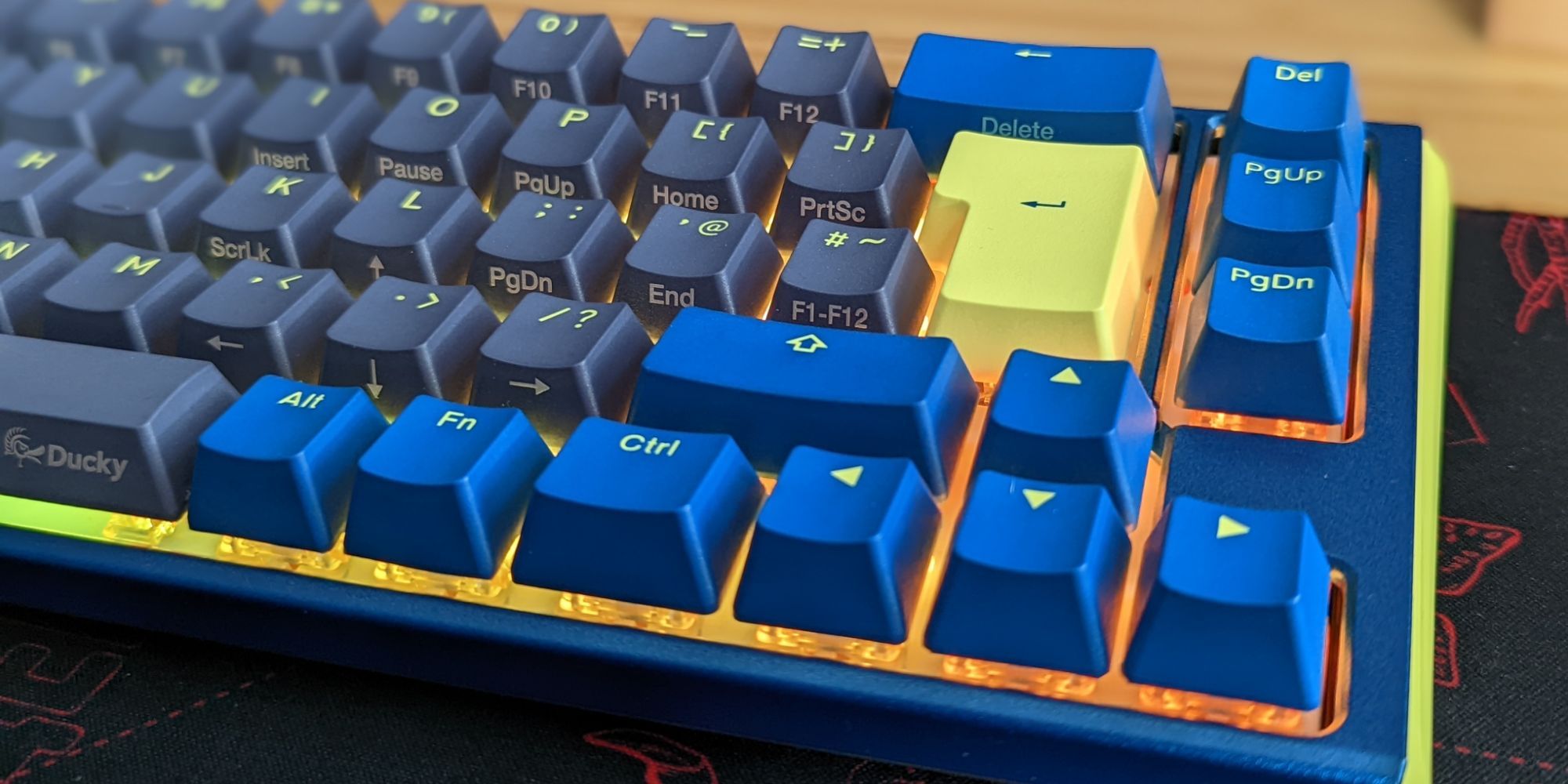Mechanical keyboards are an enigma to me, with so much terminology for fruit-flavoured switches, fanciful colours, and a whole load of enthusiasts who swear by them. I’m still not entirely sure what fresh fruit has to do with anything, but I’m beginning to understand why these keyboards are so beloved.
I’ve only ever used cheap keyboards. The kind of wired ye olde keyboard design prevalent in schools, offices, shops, and just about anywhere that has a computer present. I’ve tried a few generic gaming keyboards in the past too, but always ended up back with a trusted and unremarkable design, whether it be to play games or write. I’ve never really put much thought into the keyboard I use since taking a full-time job in good old-fashioned word-writing, so perhaps it’s time to change that.
The Ducky One 3 Daybreak SF sports a vibrant blue design, toned-down grey keycaps, and a yellow accent that all contribute to a very snazzy aesthetic – and I have to be honest, I was drawn by the slight Vault-Tec feel the design offers. However, how is the keyboard itself? Well, as someone entirely unfamiliar with the ins and outs of mechanical keyboard design, allow me to type out some clickety clackety words to express why this keyboard is so joyful to use.
First off, if you haven’t grasped it yet, these mechanical keyboards are clicky, in a great way. In fact, the different switches they use – Cherry Brown, Cherry Red, etc. – account for just how clicky it behaves. With varying degrees of noise, resistance, and travel distance, you can pick a keyboard feel that suits you perfectly. For me? I picked Cherry Brown because I was guessing that would be fine for me, and lo and behold, I love it. The satisfying clicks while writing this review give me power.
It also comes with some extra bits and pieces, including tools to remove keycaps if you wish to clean the keyboard – which is incredibly easy to do – or swap out keycap designs entirely. There are even a few alternate keycaps included in the box, just in case you want a bit more of that yellow accent to be prominent instead of an array of blues and grays.
The keyboard is easy enough to plug in and get started, and there isn’t much to mess around with software-wise. There are updates you can install for it, which is quick and easy to do, but beyond that: you’re good to go. It has various functions, including controls for RGB backlighting, which has a few modes to switch between – or you can turn it off entirely. This is a little more fiddly, and I still don’t quite understand the specific functions to control it, but if you spend some time and find some kind person online to explain it, it’s easy enough to grasp and set it to the mode you like best.
At first, the peripheral seemed quite small, too – it makes sense, because it is smaller. To be precise, this is a 65-percent-sized keyboard, so the jump between my boring old standard non-click keyboard and this one took a few days of adjustment, but now I appreciate its compact form. It’s neat, it’s tidy, and it turns out I didn’t need a num pad nearly as much as I thought I did.
While there are specifics that I haven’t delved into, such as the concave, angled keycaps, I don’t know much about these pieces of tech or have any point of reference for comparison. What I can say is that the Ducky One 3 Daybreak SF is a wonderful keyboard to use, and that I’m excited to enter the world of mechanical keyboards with what feels like the perfect entry point. Also, now I will never stop clicking and clacking as I work. Excellent.
The Ducky One 3 Daybreak SF was provided for this review.
Source: Read Full Article

.jpg)